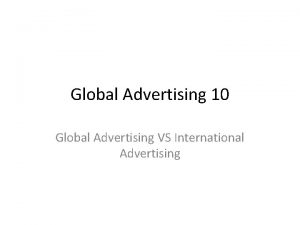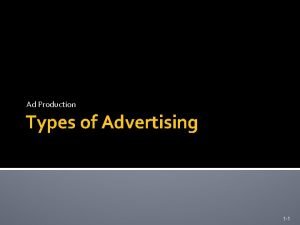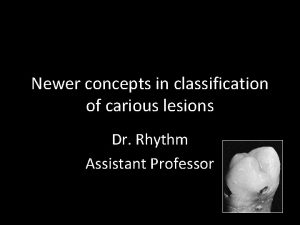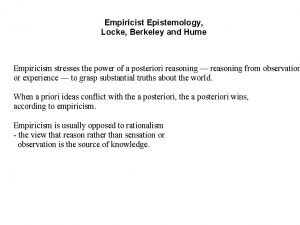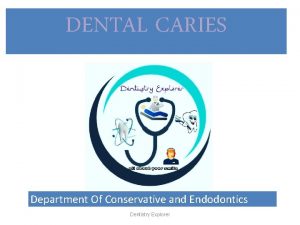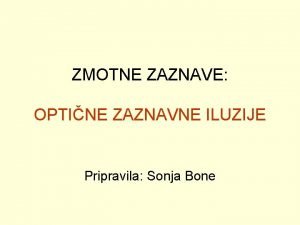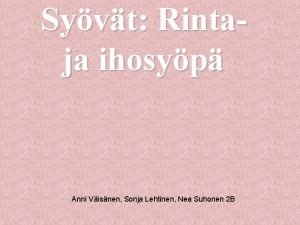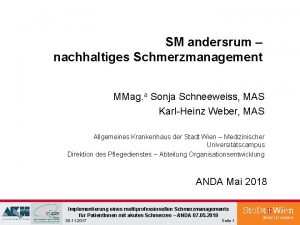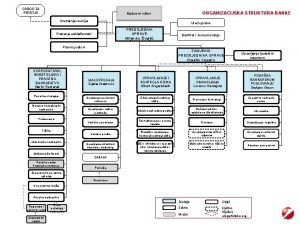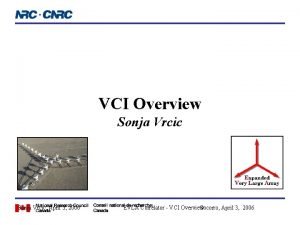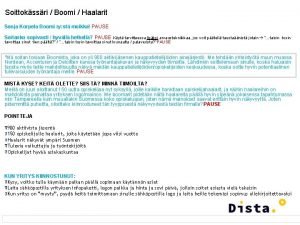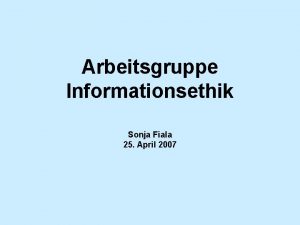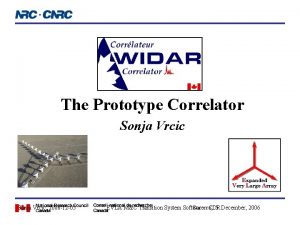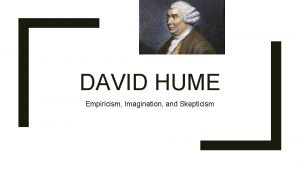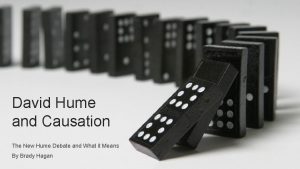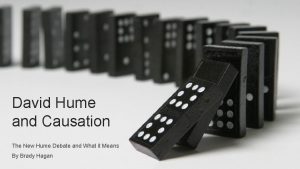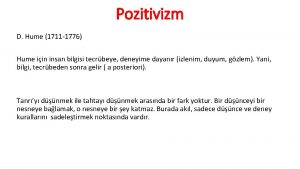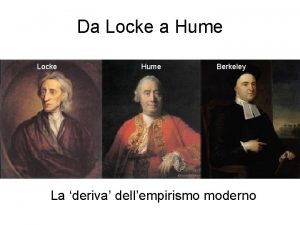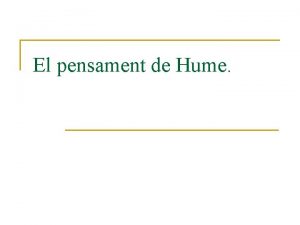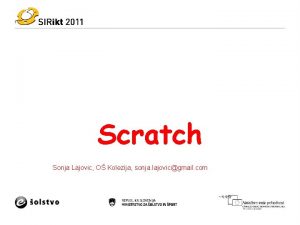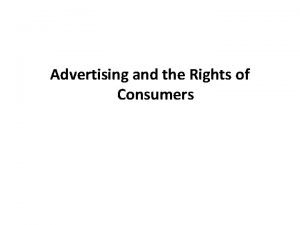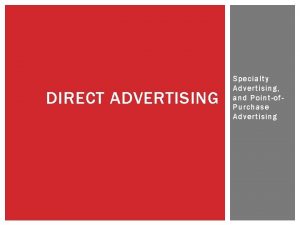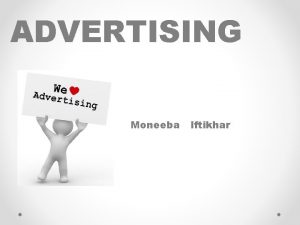Advertising Production Week 12 Sonja Tanjic and Hume







































- Slides: 39

Advertising Production Week 12 Sonja Tanjic and Hume Winzar

What is a Good Commercial? n What does it mean to: – Clients – Creative Team – Audience n Needs synergy between the objectives of each group

Why Do Formal Evaluation? n n n An ad is an investment. The client needs assurance that it is sound. Facilitates effective creative development. Helps ensure that the agency delivers the ROI.

Outcomes of Advertising? n n n Learning, understanding, reminding Feelings, emotions, connections, meaning Desire, trial, purchase.

Goals of Advertising? n n Attention, Get a message across Energise feelings Induce behaviour

Why Test advertising? n n Do we catch attention? Do we get a message across? What feelings are energised? Do we induce behaviour?

What Outcomes? n Cognitive – Recall, Recognition, Comprehension n Affective – Likability, Brand Loyalty, Credibility n Behavioural – Purchase, Orders, Responses

What Measures? n Perception – Recall n Communication – Knowledge, Impressions n Influence – How the ad is thought to work

Stages of Evaluating Research n Pre-testing – Concept and execution testing n Review Board – In house quality control n n Client Approval Post-testing – Was it successful? – How can we apply the results?

Concept Testing n n Opportunity to test different creative ideas and to see whether the idea resonates with the audience Card Test

Execution Testing n n Looks for negative association, miscommunication and product identity Often relies on focus groups As close to final finish as you can afford Animatics – Video shot from storyboard with the camera moving to simulate action – Photomatics uses slides

Post Evaluation n Starch Scores for print ads Burkes Day After Recall (DAR’s) Not only attempts to measure success but also shapes future creative strategy

Roper Starch ADD+IMPACT® n Attention: What specific elements caught the reader's attention and why? n n n Positive and negative comments: What are the reactions and feelings about this material? Message communication: Are the intended messages getting through? Brand difference: Was there new information learned about the product and brand? Is there a need for the product? Purchase intent: Will they purchase or try the product? n Effective: Not a win/lose or good/bad evaluation

From recent Roper Starch Newsletter n Simple: – Best ads have one powerful illustration and one simple message. n Flow: – Eye moves from illustration to headline to bodycopy to logo. n Not selling product, selling benefits: – “What’s in it for me”

Starch Scores Print Ads n n n Colour has 50% more readership Wordiness not a factor Photographs do better than drawings Resonance images do well People recognise their own gender best Ad’s that give (eg: coupons) do better

Burke Scores TV Ads n n n Need strong visual start Repeat brand name (5 times is the rule) Use strong benefit approach Depict target audience in commercial Close with name of product and visual cue

Burke's Ad. Test — Diagnostic Copy Testing For TV Or Print n n n Evaluate commercial's ability to communicate its strategic messages. Compare with database for being believable, involving, and motivating. Determine reactions to specific executional elements.

How The Ad. Test Results Are Analysed n n The key measures: main idea communication, likeability, potential elements of confusion, brand purchase motivation and ability to communicate key sales points. Scores are compared to a normative database of several hundred tests. Specific product categories are reviewed as well as best and worst case scenarios.

How The Ad. Test Results Is Conducted n n n Target consumers are recruited in a mall environment to view the commercial in a forced exposure situation. The interview consists of a series of standard probed open-ended questions, as well as ratings on key measures. Commercials can be tested in; Finished, Photomatic, or Animatic.



Pilot testing: Rapid Ad Measurement (RAM) 1. 2. 3. 4. Proved Name Recognition (PNR) - % of readers who can provide recall. Idea Communication - ideas communicated by the ad and feelings generated by the ad. Favourable Buying Attitude/Favourable Attitude –purchase intent. Net Effectiveness - The product of PNR and Favorable Attitude.


What Works Well. . . Produces appropriate impression n Accurately communicates its intended message n Is personally relevant n Engages the emotions in a positive way n Is believable and not irritating n Strong creative execution n Strong brand identification n Simple and single minded n

Using Evaluation in Development n n n If strategy doesn’t work - start over! If execution doesn’t work - fix it or start over! Highlights the importance or doing strategy right in the first place

Problems n n Forecasting has a poor track record which is why there continues to be so much testing There are many problems still associated with copy testing

Validity Problems n What to measure? – Ambiguity and divergence of approaches n n Tells you that there is something wrong but not what to do about it Extremely complex and inconsistent Often only based on single exposure data Poor track record relative to traditional measures of validity – Sensitivity, stability, reproducibility, predictability

Television Pretesting n n Intrusiveness of the commercial. Idea Communication and Main Point Communication. Persuasion. Favourable purchase attitude or inclination toward the brand, service, or company. Commercial reaction affective responses to the commercial, Commercial Liking and Commercial Excellence.




Why Creatives Hate Research n n See it as a conspiracy to stifle creativity See it as too conservative and dull Research is often the bearer of bad news Distrust of statistics and numbers

Issues in Ad Evaluation n n Forms of Ads Types of Measuring Tools

Forms of Ads n n The further away it is from the final, the less realistic, but the further away, the less cost and the more testing and evaluation can be done to identify a winner The less-finished ads are most useful for non-execution related effects

Types of Measuring Tools n n Ad orientated measures Physiological Measures: – Psychogalvanometer (Skin-Reactive) – Eye Tracking Camera – Perceptoscope (Pupil Dilation)

Verbal Measures n Recall – Aided and Unaided n n Comprehension Subjective Measures – Interest – Persuasion – Believability – Favourites

Methods of Exposure Natural vs Controlled n n n Natural – In real context – No control & no knowledge as to what is really happening Controlled – Introduces control over variables, but artificial settings can bias results Control sacrifices attention measures; natural sacrifices ability to understand Pre-test - Controlled Measures Post-test - Natural Measures

Moments of Measuring n Immediate – Better link to direct effects of ad, more sensitive measure n Delayed – Measure retained factors in competition – More realistic measures of outcomes – Usually delayed measures based on 24 hour exposure

Conclusion n Despite limitations, formal evaluation is usually better than relying on personal impressions, instincts, intuition or charisma. However, can also kill a successful ad - so it should be used with caution
 Jelaskan tujuan dari pengujian post production
Jelaskan tujuan dari pengujian post production Global advertising and international advertising
Global advertising and international advertising Week by week plans for documenting children's development
Week by week plans for documenting children's development Advertising production people
Advertising production people Enamel rods in primary vs permanent teeth
Enamel rods in primary vs permanent teeth Mount and hume classification
Mount and hume classification Locke berkeley and hume
Locke berkeley and hume Dentistry
Dentistry G j mount classification of caries
G j mount classification of caries Mount and hume classification
Mount and hume classification Transverse clefts dentin
Transverse clefts dentin Iliac crest bone
Iliac crest bone Sonja gaines
Sonja gaines Monica svedberg
Monica svedberg Rintasyöpä
Rintasyöpä Sonja schneeweiss
Sonja schneeweiss Cindori
Cindori Sonja kalauz
Sonja kalauz Sonja levy
Sonja levy Sonja isken
Sonja isken Sonja kerkhoff
Sonja kerkhoff Sonja filiposka
Sonja filiposka čuj pigi zaljubila sam se cijela knjiga
čuj pigi zaljubila sam se cijela knjiga Sonja vrcic
Sonja vrcic Sonja korpela
Sonja korpela Pin ekof
Pin ekof Sonja harris haywood
Sonja harris haywood Sonja liukkonen
Sonja liukkonen Sonja rondestvedt
Sonja rondestvedt Sonja kalauz
Sonja kalauz Sonja eisenbeiss
Sonja eisenbeiss Sonja caffe
Sonja caffe Sonja fiala
Sonja fiala Sonja kalauz
Sonja kalauz Sonja andersen
Sonja andersen Sonja vrcic
Sonja vrcic Sonja vrcic
Sonja vrcic Sonja apartments eugene
Sonja apartments eugene Endringskurven
Endringskurven Sonja leighton-kone
Sonja leighton-kone

